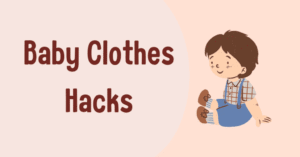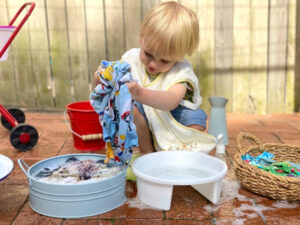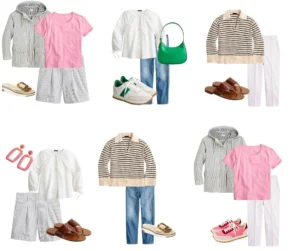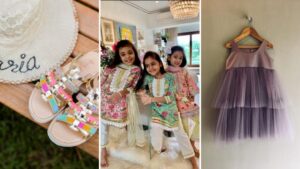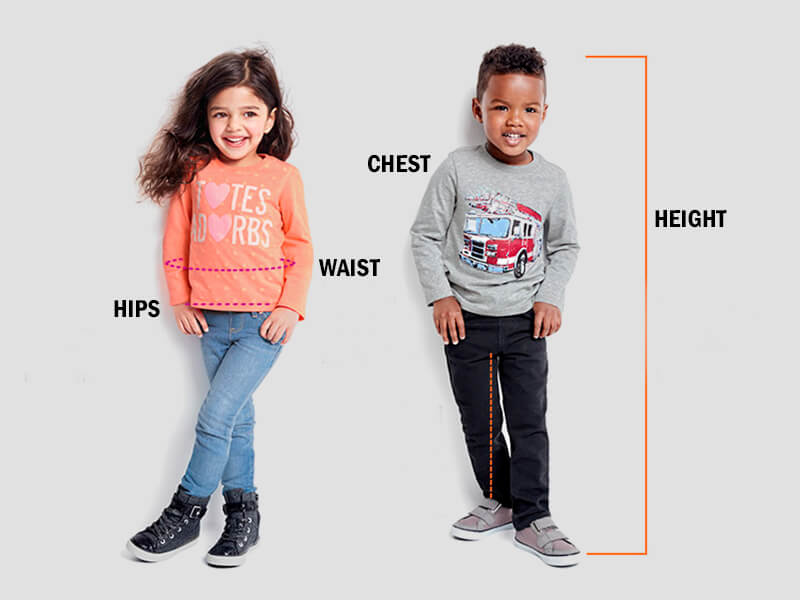
Shopping for kids’ clothes in India can feel overwhelming. Children grow quickly and their clothing needs change just as fast. Parents often face challenges in selecting the right size because sizing varies across brands, age groups and even countries. Choosing clothes that fit well is important not only for style but also for comfort and long-term use.
In this blog, let’s explore how parents can pick the right size for kids’ clothes in India. You’ll also find practical tips, size charts and shopping advice designed to make your next purchase easier.
Why Picking the Right Size Matters
Many parents buy clothes a size bigger, thinking their child will grow into them. While this may save money in the short term, it can also create problems. Clothes that are too loose may affect movement and those that are too tight can cause discomfort. Getting the right fit matters because:
- Properly fitted clothes allow children to play and move freely.
- Correct sizes reduce the risk of skin irritation or rashes.
- Well-fitted clothes last longer because they are used more often.
- Parents save money by avoiding frequent returns or wasted purchases.
With these points in mind, let’s see how you can make smarter clothing choices.
Understanding Indian Kids’ Clothing Sizes
In India, kids’ clothing sizes usually follow age-based labels like 0–3 months, 6–12 months, 2–3 years, or 5–6 years. However, every child grows at a different pace. A two-year-old may wear clothes meant for three years, depending on height and weight.
Here are the most common sizing systems you’ll find in India:
- Age-Based Sizes – These are the most popular, but they are approximate.
- Height-Based Sizes – Some international brands use centimeters or inches.
- Weight-Based Sizes – Mostly for infants, since weight impacts fit.
- Universal Sizes (XS, S, M, L, XL) – Used for older kids and teens.
The key is not to rely only on the number on the label. Instead, parents should compare size charts, take measurements and choose accordingly.
Measuring Your Child Correctly
Before you shop, measure your child’s body. This ensures accuracy and avoids confusion with brand-specific sizing. You’ll need a measuring tape and a notebook to note the details.
- Chest – Wrap the tape under the arms around the fullest part.
- Waist – Measure around the natural waistline, not too tight.
- Hip – Place the tape around the widest part of the hips.
- Height – Ask your child to stand against a wall, then measure from head to toe.
- Inseam – Measure from the crotch down to the ankle.
Comparing these measurements with brand charts will help you make a more reliable choice.
Standard Kids’ Size Chart in India
While exact numbers vary, here’s a general Indian size chart you can use as a reference:
| Age Group | Height Range (cm) | Weight Range (kg) | Common Sizes |
| 0–3 months | 50–60 | 2.5–5.5 | Newborn / 0–3M |
| 3–6 months | 60–66 | 5.5–7.5 | 3–6M |
| 6–12 months | 66–76 | 7.5–10 | 6–12M |
| 1–2 years | 76–86 | 10–12 | 1–2Y |
| 2–3 years | 86–96 | 12–14 | 2–3Y |
| 3–4 years | 96–104 | 14–16 | 3–4Y |
| 5–6 years | 110–116 | 16–20 | 5–6Y |
| 7–8 years | 122–128 | 20–25 | 7–8Y |
| 9–10 years | 134–140 | 25–32 | 9–10Y |
Keep in mind that this is only a guideline. Always check the brand’s official size chart before purchasing.
Common Mistakes Parents Make While Shopping
Even with size charts available, parents often fall into some common traps:
- Relying Only on Age Labels – Not every child matches the “average” size for their age.
- Ignoring Fabric Type – Cotton shrinks after the first wash, while stretch fabrics offer more flexibility.
- Not Considering Seasonal Layers – Winter clothes may need extra room for layering.
- Buying Too Many at Once – Kids grow quickly and stockpiling may lead to unused clothes.
- Overlooking Brand Differences – Indian, US and European size charts may not match.
By avoiding these mistakes, shopping becomes less stressful and more cost-effective.
Seasonal Considerations for Kids’ Clothing Sizes
India’s diverse climate makes clothing selection more complex. Parents should adjust sizes depending on the season.
- Summer – Go for breathable cotton fabrics with a slightly loose fit.
- Winter – Consider one size bigger for sweaters, jackets and thermals since kids wear layers.
- Monsoon – Choose quick-dry fabrics with a snug fit to avoid discomfort.
These small adjustments help parents make better seasonal purchases.
Online vs Offline Shopping: Which is Better for Sizes?
Both online and offline shopping have advantages and disadvantages when it comes to sizing.
Online Shopping
- Access to global brands.
- Detailed size charts available.
- Easy return and exchange policies.
- Convenient shopping from home.
Offline Shopping
- Kids can try clothes before purchase.
- Instant fit check.
- Better for last-minute festival or school needs.
Smart parents combine both methods browsing online for options and checking sizes in store when needed.
How to Handle Size Differences Across Brands
Parents often notice that a size “4–5 years” from one brand is smaller or bigger than another. This happens because there’s no universal standard in kids’ fashion. The solution is to:
- Always check brand-specific size charts.
- Read customer reviews about fit.
- Order two sizes if shopping online, then return one.
- Stick to reliable brands once you know their sizing works for your child.
This saves time and reduces the frustration of returns and exchanges.
Tips for Long-Lasting Fit
Kids outgrow clothes quickly, but parents can still maximize usage with smart choices:
- Look for Adjustable Features – Elastic waistbands, stretch fabrics and adjustable straps.
- Choose Layer-Friendly Clothes – T-shirts that can be worn alone or under jackets.
- Pick Neutral Colors – These can be reused across seasons and paired with multiple outfits.
- Shop During Sales – Buy a size ahead for the coming season to save money.
These tips ensure you get value for every purchase.
Final Thoughts
Choosing the right size for kids’ clothes in India requires planning, measurements and awareness of brand differences. Parents should always check charts, consider fabric type and think about seasonal needs before buying. By doing so, children stay comfortable, stylish and happy while parents save time and money.
For parents who prefer a blend of style, comfort and accurate sizing, Thespark Shop Kids Clothes for Baby Boy & Girl offers collections that are designed to match Indian kids’ needs while staying trendy and affordable.
READ MORE:
Complete Guide to Thesparkshop.in
Budget-Friendly Kids Clothing Hacks Every Parent Should Know
Kids Clothing Care Guide: Washing & Maintaining Clothes for Longer Life


